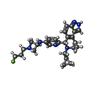Entry Database : PDB / ID : 6zosTitle Oestrogen receptor ligand binding domain in complex with compound 18 Estrogen receptor Keywords / Function / homology Function Domain/homology Component
/ / / / / / / / / / / / / / / / / / / / / / / / / / / / / / / / / / / / / / / / / / / / / / / / / / / / / / / / / / / / / / / / / / / / / / / / / / / / / / / / / / / / / / / / / / / / / / / / / / / / / / / / / / / / / / / / / / / / / / / / / / / / / / / / / / / / / / / Biological species Homo sapiens (human)Method / / / Resolution : 2 Å Authors Breed, J. Journal : J.Med.Chem. / Year : 2020Title : Discovery of AZD9833, a Potent and Orally Bioavailable Selective Estrogen Receptor Degrader and Antagonist.Authors: Scott, J.S. / Moss, T.A. / Balazs, A. / Barlaam, B. / Breed, J. / Carbajo, R.J. / Chiarparin, E. / Davey, P.R.J. / Delpuech, O. / Fawell, S. / Fisher, D.I. / Gagrica, S. / Gangl, E.T. / ... Authors : Scott, J.S. / Moss, T.A. / Balazs, A. / Barlaam, B. / Breed, J. / Carbajo, R.J. / Chiarparin, E. / Davey, P.R.J. / Delpuech, O. / Fawell, S. / Fisher, D.I. / Gagrica, S. / Gangl, E.T. / Grebe, T. / Greenwood, R.D. / Hande, S. / Hatoum-Mokdad, H. / Herlihy, K. / Hughes, S. / Hunt, T.A. / Huynh, H. / Janbon, S.L.M. / Johnson, T. / Kavanagh, S. / Klinowska, T. / Lawson, M. / Lister, A.S. / Marden, S. / McGinnity, D.F. / Morrow, C.J. / Nissink, J.W.M. / O'Donovan, D.H. / Peng, B. / Polanski, R. / Stead, D.S. / Stokes, S. / Thakur, K. / Throner, S.R. / Tucker, M.J. / Varnes, J. / Wang, H. / Wilson, D.M. / Wu, D. / Wu, Y. / Yang, B. / Yang, W. History Deposition Jul 7, 2020 Deposition site / Processing site Revision 1.0 Jan 20, 2021 Provider / Type Revision 1.1 Jan 19, 2022 Group / Category / citation_author / database_2Item _citation.country / _citation.journal_abbrev ... _citation.country / _citation.journal_abbrev / _citation.journal_id_ASTM / _citation.journal_id_CSD / _citation.journal_id_ISSN / _citation.journal_volume / _citation.page_first / _citation.page_last / _citation.pdbx_database_id_DOI / _citation.pdbx_database_id_PubMed / _citation.title / _citation.year / _database_2.pdbx_DOI / _database_2.pdbx_database_accession Revision 1.2 Jan 31, 2024 Group / Refinement descriptionCategory / chem_comp_bond / pdbx_initial_refinement_model
Show all Show less
 Yorodumi
Yorodumi Open data
Open data Basic information
Basic information Components
Components Keywords
Keywords Function and homology information
Function and homology information Homo sapiens (human)
Homo sapiens (human) X-RAY DIFFRACTION /
X-RAY DIFFRACTION /  SYNCHROTRON /
SYNCHROTRON /  MOLECULAR REPLACEMENT / Resolution: 2 Å
MOLECULAR REPLACEMENT / Resolution: 2 Å  Authors
Authors Citation
Citation Journal: J.Med.Chem. / Year: 2020
Journal: J.Med.Chem. / Year: 2020 Structure visualization
Structure visualization Molmil
Molmil Jmol/JSmol
Jmol/JSmol Downloads & links
Downloads & links Download
Download 6zos.cif.gz
6zos.cif.gz PDBx/mmCIF format
PDBx/mmCIF format pdb6zos.ent.gz
pdb6zos.ent.gz PDB format
PDB format 6zos.json.gz
6zos.json.gz PDBx/mmJSON format
PDBx/mmJSON format Other downloads
Other downloads https://data.pdbj.org/pub/pdb/validation_reports/zo/6zos
https://data.pdbj.org/pub/pdb/validation_reports/zo/6zos ftp://data.pdbj.org/pub/pdb/validation_reports/zo/6zos
ftp://data.pdbj.org/pub/pdb/validation_reports/zo/6zos


 Links
Links Assembly
Assembly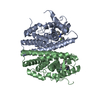
 Components
Components Homo sapiens (human) / Gene: ESR1, ESR, NR3A1 / Production host:
Homo sapiens (human) / Gene: ESR1, ESR, NR3A1 / Production host: 
 X-RAY DIFFRACTION / Number of used crystals: 1
X-RAY DIFFRACTION / Number of used crystals: 1  Sample preparation
Sample preparation SYNCHROTRON / Site:
SYNCHROTRON / Site:  Diamond
Diamond  / Beamline: I03 / Wavelength: 0.97625 Å
/ Beamline: I03 / Wavelength: 0.97625 Å Processing
Processing MOLECULAR REPLACEMENT
MOLECULAR REPLACEMENT Movie
Movie Controller
Controller


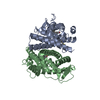
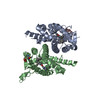
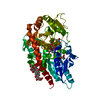
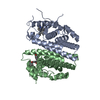
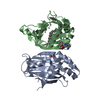
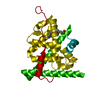
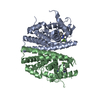
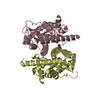

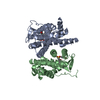
 PDBj
PDBj




